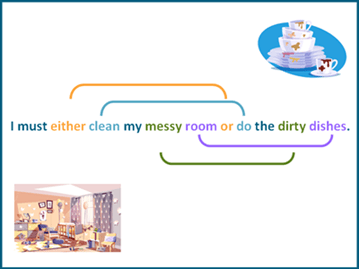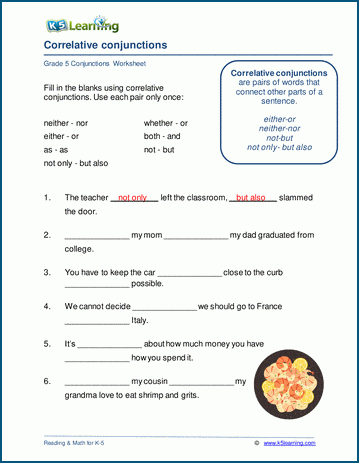What are conjunctions?
Conjunctions are words or word phrases that connect parts of a sentence. There are three main types of conjunctions: coordinating conjunctions, subordinating conjunctions, and correlative conjunctions. Today, we’re going to look at correlative conjunctions.
What are correlative conjunctions?
Correlative conjunctions are pairs of words that work together to connect two parts of a sentence that hold equal value.
For example:
I must either clean my messy room or do the dirty dishes.

Connecting two parts of a sentence that hold equal value
As you can see correlative conjunctions create pairs of equal elements. The elements are words and phrases in a sentence that are the same part of speech. Basically, there are two nouns, two adjectives, two verbs and two of the same kind of phrase.
In the above sentence, we can break it into the following elements:
Two nouns: room and dishes
Two adjectives: messy and dirty
Two verbs: clean and do
Two of the same kind of phrase: “clean my messy room” and “do the dirty dishes”.

Common correlative conjunctions
Correlative conjunctions always come in pairs. The most common correlative conjunctions are:
- either/or
- neither/nor
- such/that
- whether/or
- not only/but also
- both/and
- as many/as
- no sooner/than
- rather/than
Worksheets to practice correlative conjunctions
In our grade 5 grammar section we have a set of worksheets for students to complete sentences using correlative conjunctions.


